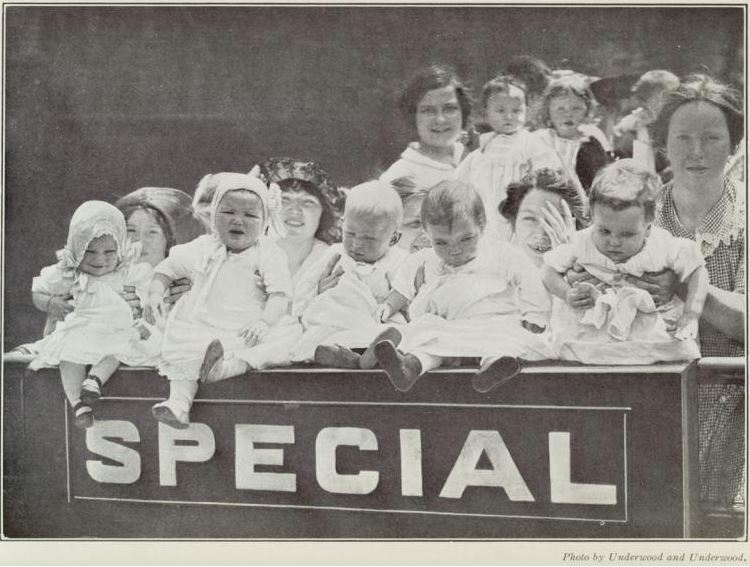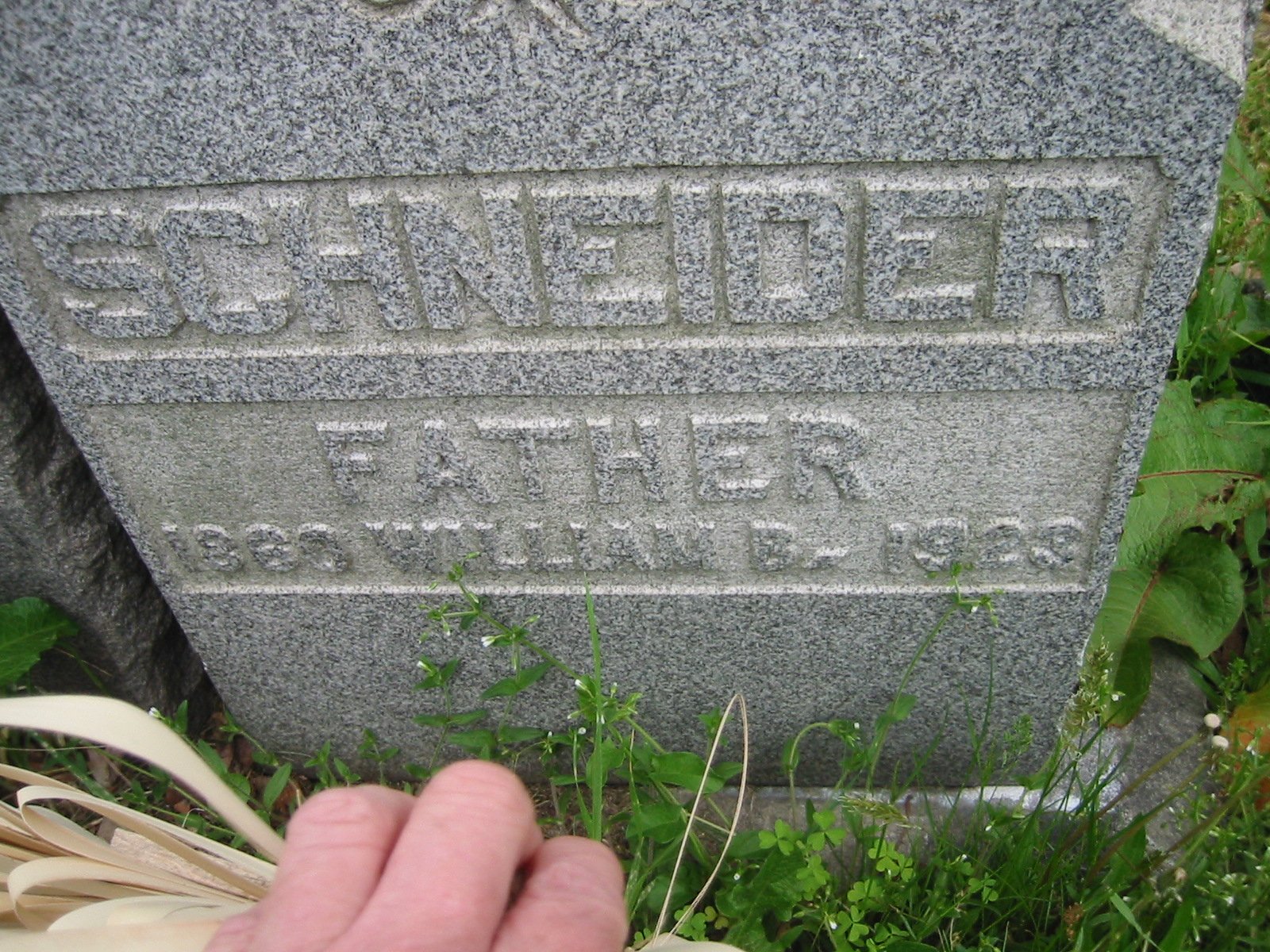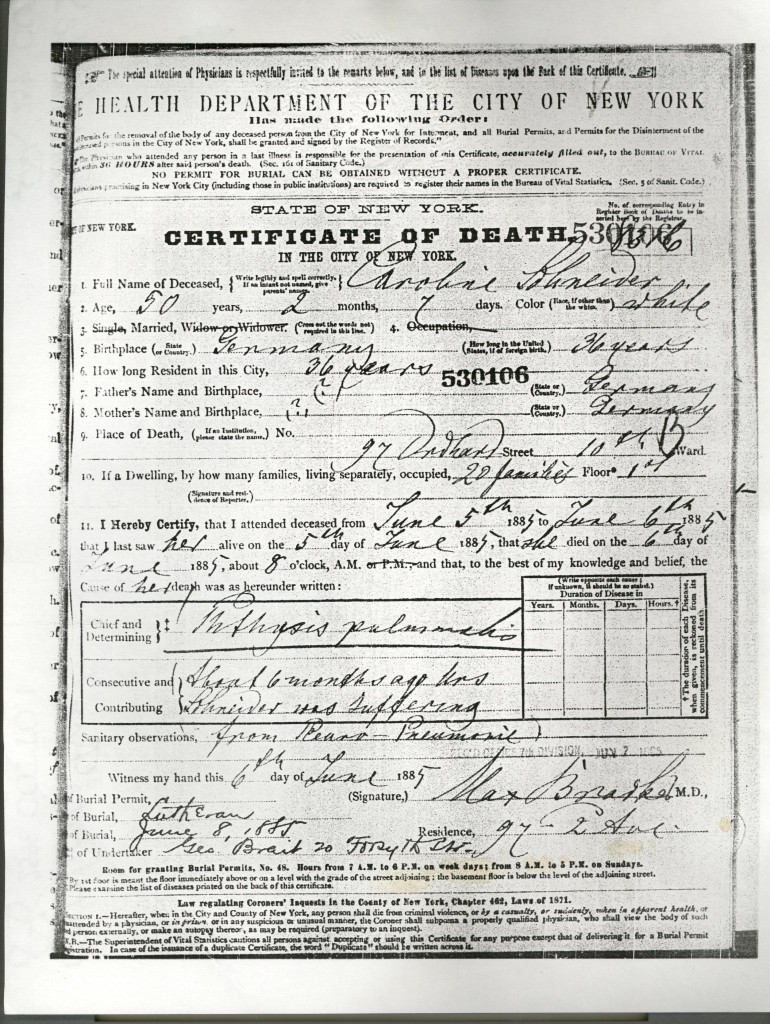Blog Archive
Statistics vs. Stories
SPOILER ALERT: On the Tenement Museum’s Shop Life tour, we describe how Caroline Schneider, co-owner with her husband of a German-American lager saloon at 97 Orchard, died of tuberculosis at the age of 50. Sometimes a visitor asks, “What was life expectancy back then?” I get it. They want to know if dying at 50 was such a bad thing. Maybe she was considered lucky to last so long.
As it turns out, answering this visitor’s question is harder than it may seem. According to the Mapping History Project at the University of Oregon , average life expectancy in the United States in 1885 – the year Caroline died – was about 42 years. So Caroline was lucky to live to 50!
But there’s more than one way to measure life expectancy. Men and women typically have different life expectancies, as the Mapping History Project website makes clear. Then as now, women typically lived longer.
The nuance doesn’t end there. “Average life expectancy” can be calculated from birth or from later in one’s life. If you calculate average life expectancy from birth, all those babies who died of communicable diseases such as diphtheria and measles weigh down the average. If we visit the Mapping History Project website again and choose to calculate average life expectancy from age 5 – that is, average life expectancy for those Americans who lived to their 5th birthday – the number is quite different. For girls who survived to age 5 in 1885, average life expectancy was 55 years – 13 years longer than if we calculate average life expectancy from birth!

Woman and children gather in this photograph of a 1914 rally to raise visibility for infant deaths. Photo courtesy of the New York Public Library.
Let’s not stop there. If we calculate average life expectancy for girls who attain their 5th birthday, we include the many women who died in childbirth. Caroline, at age 50, was past that hurdle. And indeed if we return to the Mapping History Project website and calculate average life expectancy from age 40 – that is, average life expectancy for those American women who made it to the 40th birthday – the number shoots up again, to 66 years – 24 years longer than if we calculate average life expectancy from birth.
As much as I love the Mapping History Project website, its Life Expectancy calculator omits key variables. What was average life expectancy for immigrants like Caroline compared to native-born Americans? What about average life expectancy for city residents like Caroline versus rural Americans? Even among immigrant women in New York City, how did a German woman’s life expectancy compare with an Irish woman’s? If we really wanted to drill down to Caroline Schneider’s expected lifespan, we would need to compare her to other German immigrant women living on the Lower East Side and working alongside their husbands in saloons.
By this point we’ve fallen down the rabbit hole and lost sight of what the Tenement Museum is all about. On Shop Life I keep the focus on John and Caroline Schneider, their customers, and their son, Harry. When Caroline died, Harry was just 8 years old. We don’t know how he felt the day his mother died, but we can imagine how he felt. And however he felt, he probably didn’t feel that his mother was lucky to live so long. No matter their age, the death of a loved one hurts. And for Harry and John, it was doubly devastating: The death of their beloved Caroline also marked the beginning of the end of the Schneiders’ saloon, because without the labor she did for free, the saloon could not survive for long.
It’s not that statistics are a bad thing. It’s just that they’re imprecise and open to interpretation – just like stories. At the Tenement Museum we focus on the stories because statistics alone can never tell us what it truly feels like to be someone else. And by exploring how it would feel to be someone else, we give life to history and encourage empathy for the many different people who live among us today.
–Posted by Adam Steinberg, Senior Education Associate

